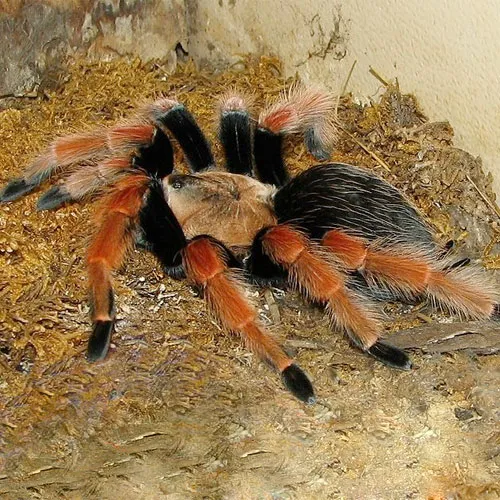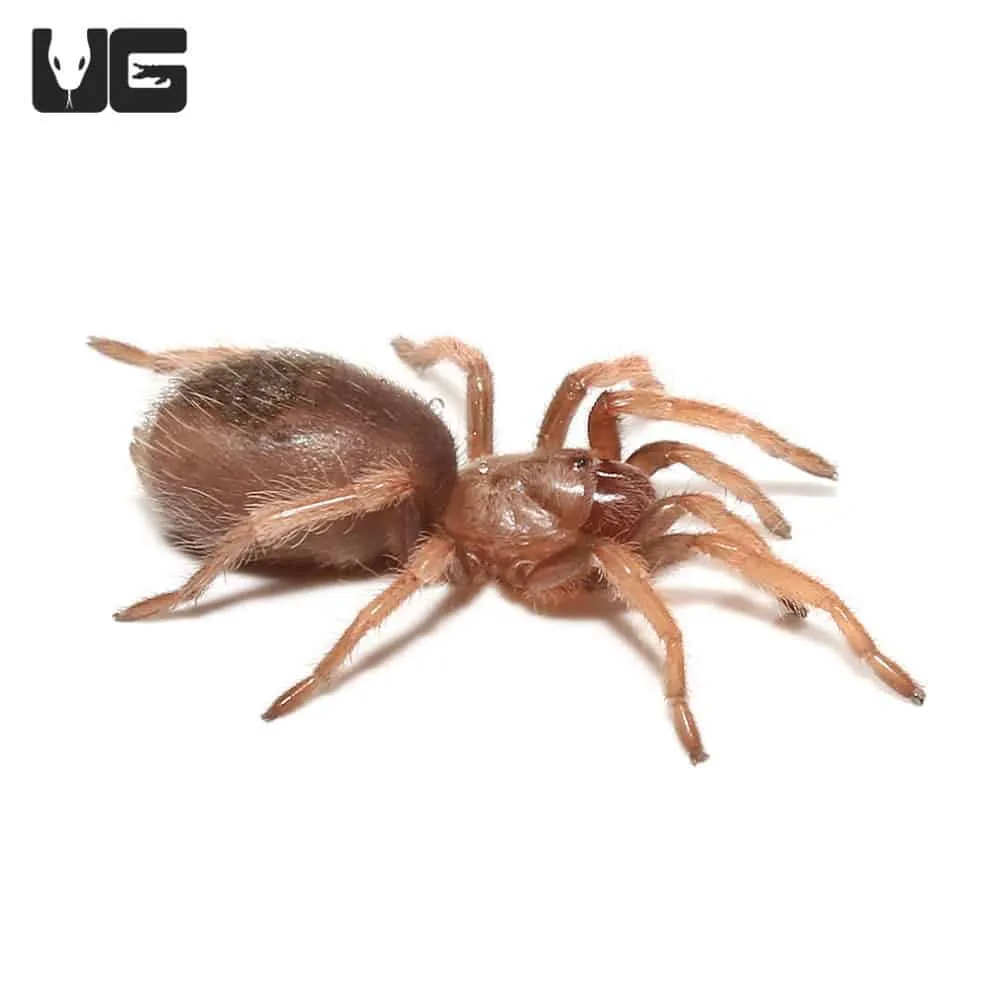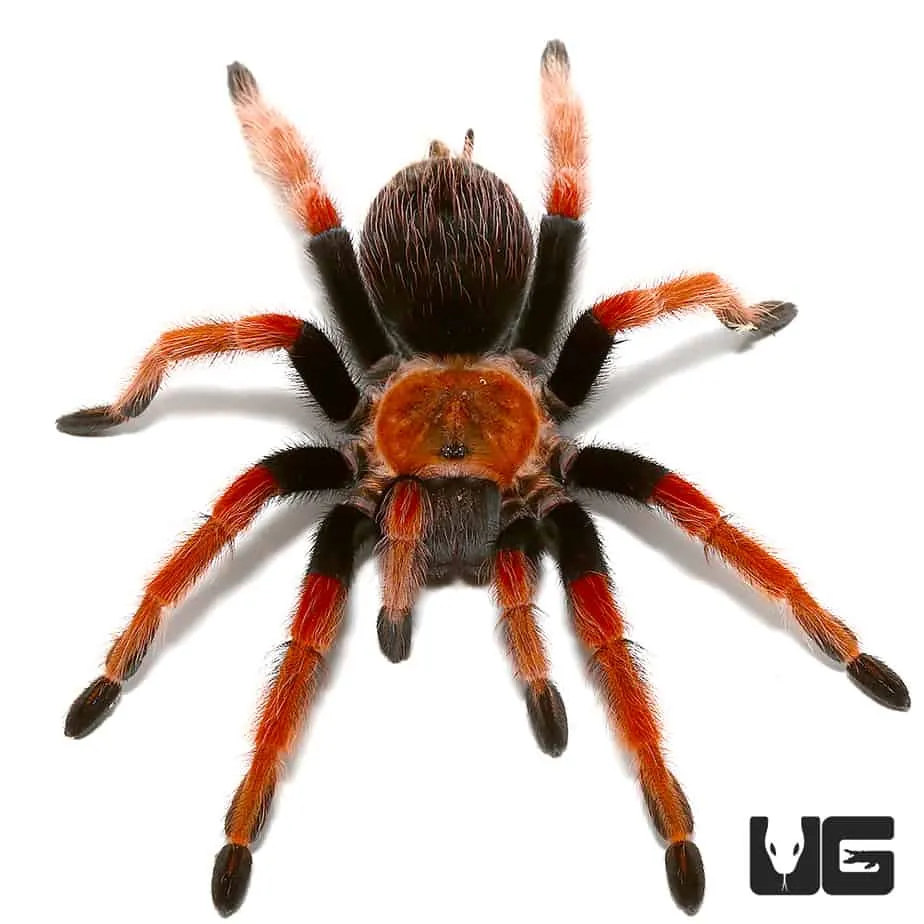Understanding Fire Leg Tarantula Prices
The fire leg tarantula (Megaphobema robustum) is a captivating and sought-after species among tarantula enthusiasts. Understanding the fire leg tarantula price is crucial for potential owners. Several factors contribute to the overall cost, and being informed can help you make a wise decision and avoid overspending. This guide will delve into the various aspects affecting the price, providing you with the knowledge needed to navigate the tarantula market confidently. From the initial purchase to ongoing care expenses, we’ll explore everything you need to know to budget effectively for this impressive arachnid. The price of a fire leg tarantula reflects its rarity, the effort involved in breeding, and the demand within the hobby. Let’s begin by exploring the key elements that determine its market value.
Factors Influencing Fire Leg Tarantula Price
Several key elements influence the fire leg tarantula price, making it essential to understand these before purchasing. The price is not fixed; it fluctuates depending on several variables. These factors ensure that the market value is always influenced by a dynamic interaction. The health, age, and origin of the tarantula will also factor in the price. Understanding these factors is paramount to make informed decisions and ensure you’re getting a fair price. Proper research allows you to evaluate the offers and choose the fire leg tarantula that best suits your needs and budget. The cost of a fire leg tarantula will fluctuate based on these factors. The tarantula’s age will also determine its market price.
Age of the Tarantula

The age of a fire leg tarantula is a significant price determinant. Younger tarantulas, often referred to as spiderlings, are typically less expensive than older, more mature specimens. Spiderlings are more delicate and require specialized care, which can be a deterrent for some buyers. As tarantulas mature, their price generally increases due to their size, established feeding habits, and the ability to showcase their adult coloration and behaviors. However, very old tarantulas, nearing the end of their lifespan, might be priced lower. The prime age for buying a fire leg tarantula is often sub-adult to early adult, when they are robust and have established their feeding patterns, yet still have a good lifespan remaining. Consider the lifespan of the tarantula when evaluating its age and the associated price.
Size and Maturity
Size directly correlates with maturity and, therefore, price. Larger, more mature fire leg tarantulas command higher prices. This is because larger specimens are typically sexed and have already undergone several molts, which allows for a clearer view of their eventual size and appearance. The size of a tarantula is a visual indicator of its development. The increase in price is related to the time and resources invested in raising the tarantula. A fully grown adult is considered a premium product, reflecting the investment in time and resources by the breeder. The size and maturity also offer a better understanding of the tarantula’s temperament and feeding habits, providing potential owners with valuable information for informed decisions.
Morphs and Coloration
While the fire leg tarantula has a recognizable appearance, variations in coloration and patterns can influence price. Some individuals may exhibit more vibrant red leg markings or unique colorations, making them more desirable to collectors and thus, more expensive. These variations are often the result of genetic differences and are highly sought after. Breeders sometimes selectively breed for specific traits, which can further increase the price of a tarantula. The distinct features enhance the aesthetic value of the tarantula and contribute to its appeal among enthusiasts. These factors should be considered when evaluating the market. The demand for particular colors and patterns drives the pricing.
Origin and Breeder Reputation

The origin of a fire leg tarantula, including its breeder’s reputation, significantly impacts its price. Tarantulas from reputable breeders are often more expensive because they are known for producing healthy, well-cared-for specimens. These breeders typically provide detailed information about the tarantula’s lineage, age, and health history, increasing its value. Purchasing from a known breeder can also reduce the risk of getting a tarantula with health issues or unknown origins. Breeders specializing in specific morphs or color variations may also command higher prices for their animals. The reputation of the breeder is a crucial factor, indicating the quality and health of the tarantula. When purchasing from a respected source, you invest in a quality specimen.
Sex of the Tarantula
The sex of the fire leg tarantula can influence the price. Female tarantulas are generally more expensive than males. Females have a longer lifespan, typically living several years longer than males, making them a more long-term investment. Female tarantulas are also valuable for breeding purposes. Mature females can produce egg sacs, which allows for the potential of selling spiderlings, which can offset the initial investment. Males, on the other hand, tend to mature faster and have a shorter lifespan. This difference in lifespan and breeding potential makes females a more valuable proposition for many enthusiasts. Determining the sex can sometimes be difficult in younger tarantulas, adding to the price of those that have already been sexed.
Where to Buy a Fire Leg Tarantula
There are various avenues to consider when purchasing a fire leg tarantula, each with its pros and cons. The choice of where to buy significantly impacts the price, health, and quality of the tarantula you acquire. Different sources offer varying levels of expertise, customer support, and guarantees, which can influence your purchasing experience. Researching and understanding each option is essential to make an informed decision. The accessibility and reliability of these sources should also be considered. The following provides information on where to buy your fire leg tarantula to assist you with your purchase.
Online Tarantula Retailers

Online retailers offer a wide selection of fire leg tarantulas, often with detailed information and photos. These platforms provide convenience and the ability to compare prices from different vendors. Reputable online retailers usually provide guarantees about the tarantula’s health and safe shipping practices. However, it is important to research the retailer’s reputation and read customer reviews before making a purchase. The shipping process can be stressful for the tarantula, so ensure the retailer uses proper packaging and offers a live-arrival guarantee. Online retailers often have lower overhead costs, which can sometimes result in competitive pricing. This option is convenient and allows for easy comparisons.
Local Reptile Shows and Expos
Reptile shows and expos are excellent places to find fire leg tarantulas. These events bring together numerous breeders and retailers, offering a chance to see the tarantulas in person and ask questions. Buying at shows can often provide lower prices, as vendors aim to sell their stock. You can assess the tarantula’s health and interact with the seller directly. However, the selection might be limited based on the show’s vendors. Research the vendors before the show. This allows you to choose those known for their quality and ethical practices. Attending reptile shows offers a unique opportunity to connect with the tarantula community and find great deals.
Private Breeders
Purchasing a fire leg tarantula from a private breeder can be a rewarding experience. Breeders typically have in-depth knowledge of the species and can provide valuable care and lineage information. Direct interaction with the breeder can ensure the tarantula’s health and history, which offers a higher level of assurance. Private breeders might offer higher prices because of their expertise and the quality of their tarantulas. It allows you to support individual enthusiasts. Before buying from a private breeder, always research their reputation. This will help ensure you’re getting a healthy tarantula. The breeder may be able to provide essential information about your tarantula.
Cost of Setting Up a Fire Leg Tarantula Habitat

Setting up a proper habitat for your fire leg tarantula is a crucial initial investment. The cost of the setup will influence the overall expense of keeping a tarantula. The habitat must replicate the tarantula’s natural environment. The setup should be designed to promote the tarantula’s health and well-being. While the initial setup costs can be considerable, these are essential for providing a suitable and enriching environment. Proper setup reduces the risk of health issues and ensures the tarantula thrives. The cost of the enclosure and other equipment should be considered when buying your fire leg tarantula.
Enclosure and Substrate
The enclosure is the most significant part of the initial setup. Fire leg tarantulas require a secure enclosure with adequate ventilation and appropriate dimensions. The size of the enclosure should match the tarantula’s size. The correct size allows the tarantula to move around. The enclosure should be made of glass or clear plastic. This allows you to view your tarantula. Substrate is another essential aspect. The substrate should provide the tarantula with a comfortable surface for burrowing and maintaining humidity. Common substrate options include coconut fiber, peat moss, and a mix of these materials. The substrate should be deep enough to accommodate the tarantula’s burrowing behavior, providing a natural environment. The enclosure and substrate are vital to the health and happiness of your tarantula.
Heating and Lighting
Fire leg tarantulas require a consistent temperature range and humidity level. Maintaining the correct conditions is essential for the tarantula’s health. Heating elements like heat mats or ceramic heat emitters are commonly used to regulate the enclosure’s temperature. These heating elements should be used with a thermostat to prevent overheating. While specialized lighting is not necessary for fire leg tarantulas, a low-wattage bulb can be used to observe the tarantula during the day. It is important to avoid direct sunlight, which can overheat the enclosure. Temperature control is essential, which also includes the substrate to ensure the tarantula’s well-being.
Food and Water

Providing food and water is another ongoing cost of owning a fire leg tarantula. The tarantula’s diet typically consists of insects. Crickets, mealworms, and roaches are common choices. These insects must be readily available. The cost of food will vary depending on the quantity and the source. Always ensure that the insects are gut-loaded with nutritious food before feeding them to the tarantula. Fresh water should always be available. This is usually provided in a shallow dish. Regular maintenance of food and water is essential for the tarantula’s health. This is a recurring expense that should be considered in the total cost of ownership.
Ongoing Costs of Fire Leg Tarantula Ownership
Besides the initial purchase and setup costs, there are several ongoing expenses associated with owning a fire leg tarantula. These include feeding, maintenance, and potential veterinary care. These recurring costs must be factored in when considering the overall affordability of keeping a fire leg tarantula. A proper understanding of these costs is necessary to provide the necessary care and ensure the tarantula’s well-being throughout its life. These costs contribute to the overall enjoyment and financial responsibility of owning a fire leg tarantula.
Feeding and Maintenance
Feeding your fire leg tarantula is a regular expense. The amount of food required depends on the tarantula’s size and age. A spiderling will require less food than a mature adult. The cost of insects can add up over time, and buying in bulk might be more economical. Regular maintenance includes cleaning the enclosure and replacing the substrate. Spot cleaning is essential to keep the environment clean. This helps prevent the growth of mold and bacteria. The frequency of cleaning will depend on the setup. Proper hygiene is vital for the health of your tarantula, and these costs must be included in the ongoing expense.
Health and Veterinary Care

While fire leg tarantulas are relatively low-maintenance pets, occasional health issues might arise. Although rare, veterinary care for a tarantula can be expensive. Finding a veterinarian specializing in exotic animals can be difficult. The cost of the consultation, medication, and treatment can add to the expenses. Preventive care is the best approach. Proper enclosure setup, a balanced diet, and a clean environment can help reduce the risk of health problems. Being prepared for potential health issues is an essential part of responsible tarantula ownership, and budgeting for these expenses is a good practice.
Comparing Fire Leg Tarantula Prices
The prices of fire leg tarantulas can vary significantly. This section is designed to provide a perspective on the general cost ranges you can expect. Recognizing the average market prices is the first step. This allows you to make an informed decision. Comparing prices from different sources is crucial. This ensures you get the best possible value. The general price ranges that you find when shopping will vary. Understanding this price range helps you assess the value and identify potential red flags. These insights will assist you in making a successful purchase.
Average Price Ranges
The fire leg tarantula price typically varies based on the size, sex, and origin. Spiderlings typically range from $40 to $80. Sub-adult females range from $80 to $150. Adult females, especially those with unique colorations or from reputable breeders, can command prices between $150 to $300 or more. The lower end of the price spectrum usually includes younger tarantulas. Older specimens and those from well-known breeders cost more. It’s important to remember that these are average price ranges. Actual costs might fluctuate due to supply, demand, and the characteristics of the individual tarantula. Before buying, compare prices across multiple sources.
Avoiding Scams and Overpriced Tarantulas
The tarantula market is subject to scams and inflated prices. It is essential to avoid these pitfalls. Researching potential sellers is the best way to avoid scams. Check reviews and testimonials, and ensure the seller has a good reputation. A seller with poor reviews or no information should be avoided. Be wary of prices that seem too good to be true. If the price of a fire leg tarantula is significantly lower than the average market price, it may be a scam. Inspect the tarantula carefully before purchasing. Ensure it appears healthy, active, and free from any visible injuries or parasites. Trust your instincts and avoid deals that seem suspicious or involve high-pressure sales tactics. Being informed and cautious is crucial to avoid fraud and purchase a healthy tarantula.
Tips for Buying a Fire Leg Tarantula
Purchasing a fire leg tarantula requires careful planning. Following these tips will help you make a successful purchase. These tips will assist in buying a healthy tarantula and ensure that your experience is positive. It’s a step-by-step approach designed to maximize your chances of success. These steps will help you navigate the market. This will ensure that you make a wise investment. The process should be approached with care and a strong focus on the well-being of the tarantula.
Researching Breeders and Retailers
Before buying a fire leg tarantula, research the breeders or retailers. Check for reviews and testimonials to assess their reputation. Look for breeders known for their ethical practices. Ensure they provide detailed information about their tarantulas, including their origin, age, and health history. Reputable sellers are transparent and happy to answer questions. Verify if the seller is licensed or certified. Evaluate the seller’s shipping and return policies. Choose sellers with solid guarantees and a history of customer satisfaction. Doing your homework is essential to ensure you’re dealing with a trustworthy and reliable source. This will result in a positive experience.
Inspecting the Tarantula’s Health
Inspect the fire leg tarantula’s health before making a purchase. Look for signs of a healthy tarantula. Check for a plump abdomen, as a shrunken abdomen can indicate dehydration or malnourishment. Examine the tarantula’s legs. All legs should be intact. Observe the tarantula’s movements. The tarantula should be alert and move with purpose. Avoid tarantulas with any visible injuries or parasites. Ask about the tarantula’s feeding habits and recent molts. Healthy tarantulas are active and robust. Examining the tarantula’s health is a key step. This ensures you are buying a healthy specimen.
Negotiating Prices
Negotiating the price of a fire leg tarantula is possible. Researching the average market price beforehand gives you a strong starting point. If the price is higher than the average range, politely inquire about the reason. Point out any minor imperfections and use them as leverage. The willingness to pay cash can sometimes lead to a discount. During reptile shows, vendors are often more flexible with prices. Show a genuine interest in the tarantula. This will help you build a good relationship with the seller. When negotiating, be respectful and remain professional. The goal is to achieve a fair price for both the seller and the buyer.
Conclusion
Understanding the fire leg tarantula price involves considering various factors. Researching breeders and retailers and inspecting the tarantula’s health are vital steps. The prices will vary. You must understand the factors that affect the price. This guide will help you navigate the market. By being informed, you can make a wise purchase and provide a good home for your tarantula. The commitment will be rewarded with a fascinating pet. With proper research, you can enjoy the unique experience of owning a fire leg tarantula. Consider the costs, prepare for the commitment, and enjoy the exciting world of tarantulas.
